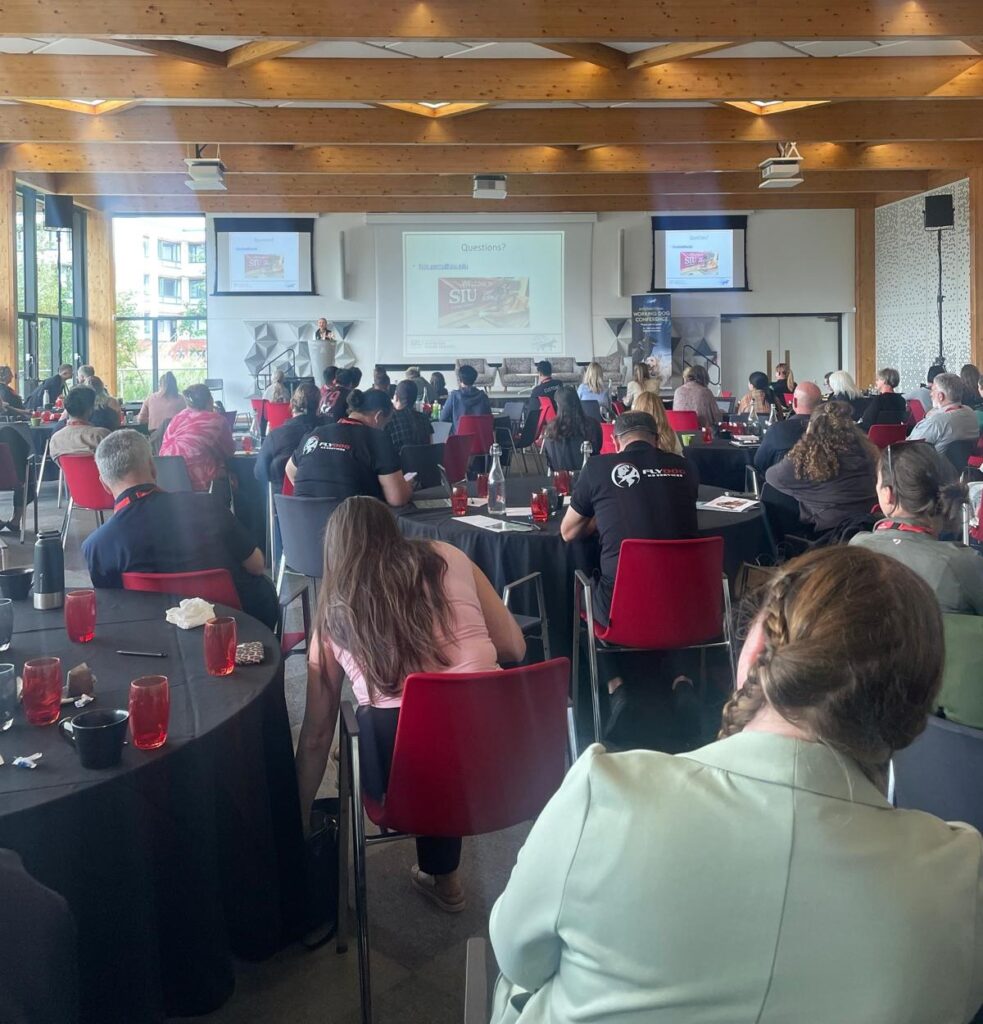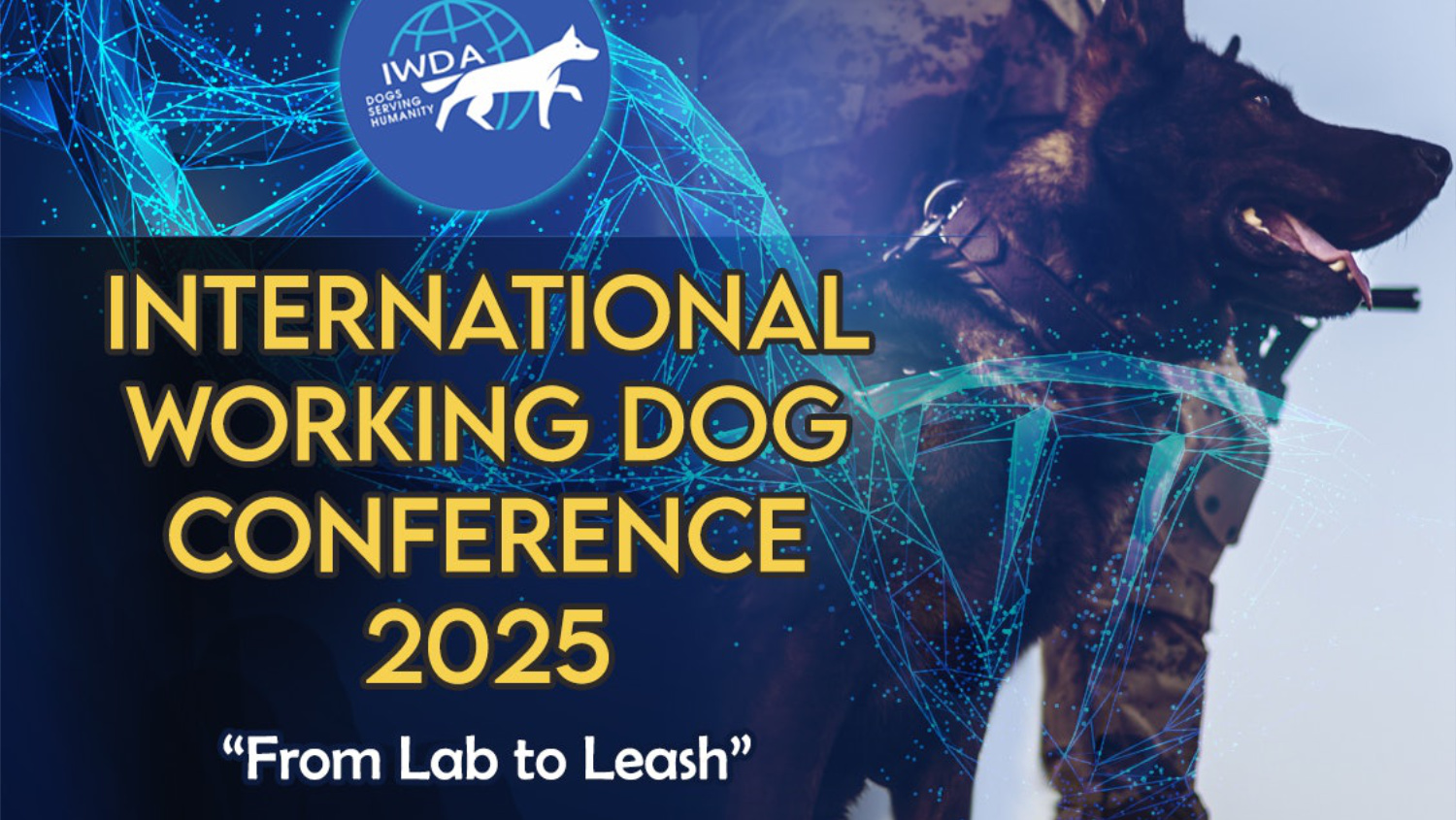One of our PAWWS members, PhD researcher Nona Borgström, participated in the International Working Dog Conference 2025 (IWDC 25) in Warwick UK, presenting her poster with the topic: Medical pain alert dogs for patients with paroxysmal pain.
The conference talks covered a broad field of expertise and research covering areas such as breeding genomics, animal welfare, technology, stress impacts on our working dogs, case reports, olfactory research.
Reflections from an Inspiring Conference

The recent conference offered an abundance of fantastic and educational lectures, all set against the beautiful backdrop of Warwick’s natural surroundings and filled with warm, passionate attendees.
One standout presentation came from Claire Guest, who explored the fascinating ways scent detection dogs signal different responses. She shared how dogs alert making decisions in shorter time, when identifying a negative sample, and how their behavior subtly shifts when they detect something unusual—something that isn’t quite a typical positive. The integration of artificial intelligence is now helping us analyze the seconds leading up to a dog’s alert, even interpreting movements like the wag of a tail to gain deeper insights into their decision-making process.
Jens Frank, from Sweden, impressed the audience with a series of well-structured, step-by-step training plans for teaching dogs to follow drones to search areas. His work also focused on improving animal safety in explosive detection by using sound signals to warn dogs when they get too close to a hazardous target—an innovation that could save lives.
A U.S. police officer spoke powerfully about the growing problem of airborne toxic substances like Fentanyl. His talk emphasized how detection dogs are vital in the fight against such threats, reminding us of the importance of preparing for evolving dangers in the field.
Another deeply moving moment came with a presentation from UK firefighters who were deployed to assist in the aftermath of the Turkish earthquake. These true heroes, along with their dogs, arrived within hours of the alarm being raised to search for survivors. Their bravery raised important questions about the human-animal partnership: how do we ensure the safety and wellbeing of all involved? While the dogs had veterinary support during deployment, the human rescuers—crawling beneath rubble and risking their lives—also carry immense physical and emotional burdens. How do we support their recovery, process their trauma, and acknowledge the incredible planning and sacrifice behind each mission?
Perhaps the most emotional moments were hearing from handlers who spoke through tears about their dogs—their best friends, partners, and companions. It made me reflect deeply on the nature of working animals. Which dogs find happiness in this kind of work? Are certain dogs naturally drawn to the thrill of the task and the emotional bond with humans? Should selection for working roles consider not just capability, but also the animal’s joy and empathy?
In the end, the true heroes are those humans who love their dogs as equals, who dedicate their lives to training, partnership, and mutual respect. And perhaps, in some unspoken way, the dogs feel the same.
Author
Nona Borgström, University of Helsinki

